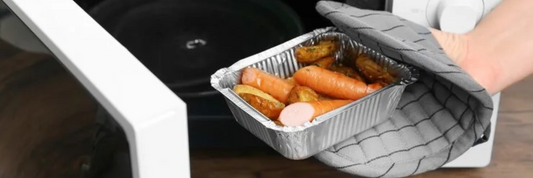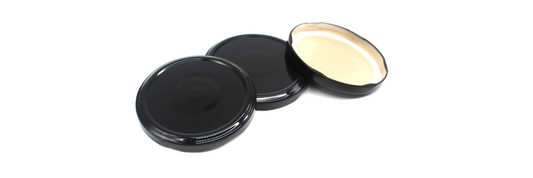Cutlery, which includes knives, spoons, forks, and chopsticks, is necessary for any eating occasion, including get-togethers and food trucks. Which type of cutlery—plastic or wooden—is your favorite? In today's article, we'll look more closely at both of these types of cutleries to determine which is best for your business.
Brief Overview of Plastic Cutlery
Types of Plastic Cutlery
When it comes to plastic cutlery, there are 2 main types: disposable and reusable.
- Single-use Plastic Cutlery: Single-use plastic cutlery is intended to use for once. It’s usually made from polypropylene (PP) and polystyrene (PS). Single-use plastic cutlery is the cheap, popular and convenient option.
- Reusable Plastic Cutlery: This type is designed to repeated uses, can be washed and reused countless time. It’s usually made from high-density polyethylene (HDPE). This option is more expensive than single-use plastic and need to wash after each use.
What Make Plastic Cutlery So Popular?
There are many reasons for using plastic cutlery for both customers and food businesses. Here is a breakdown of the reasons:
Convenience:
- Lightweight and portable: Easy to carry and store, making them ideal for picnics, travel, and on-the-go meals.
- Disposable: No need for washing or sanitizing, saving time and effort.
- Readily available: Found in most restaurants, cafes, and takeout establishments, making them the readily available option.
Cost-effectiveness:
- Cheap to produce and distribute: Makes them an affordable option for businesses and consumers.
- Lowers operating costs: Restaurants save on water, electricity, and manpower for washing reusable cutlery.
Perceived Hygiene:
- Individually wrapped: Creates a sense of being untouched and clean, even if the plastic itself might harbor bacteria.
- Avoids cross-contamination: Eliminates the risk of sharing germs from reusable cutlery.
What is Problem of Plastic Cutlery?
Every year, billions of pieces of single-use plastic cutlery are discarded into the environment. Every year, Americans consume more than 561 billion individual plastic utensils. In 2019, Canadians used an estimated 4.5 billion pieces of plastic cutlery. Plastic cutlery contributes significantly to plastic pollution, which causes several environmental and human health issues.
- Pollution: Billions of plastic cutlery pieces litter our world, harming ecosystems and entering the food chain. They form massive ocean garbage patches, threatening marine life.
- Microplastics: Degraded plastic becomes tiny microplastics, ingested by fish and shellfish, eventually reaching our plates.
- Environmental Issues: Fossil fuels used in production contribute to climate change and air pollution, while greenhouse gas emissions warm the planet. Plastic pollution destroys vital habitats.
- Health Concerns: Microplastics raise concerns about potential harm, and chemicals leaching from heated plastic can impact human health.
See more: How Does Food Packaging Impact the Environment?
What Are Alternatives to Plastic Cutlery?
There are different alternatives to plastic cutlery created to reduce environmental and health impacts of plastic cutlery. Herre are some common types:
- Stainless Steel: this material is durable, long-lasting making it perfect to make reusable cutlery, that can be used for dine-in or used at home.
- Wood: birchwood, oak wood, and bamboo are common materials to make wood cutlery. They can be used to make reusable and disposable cutlery.
- Biodegradable Cutlery: also known as bioplastic. This material is made from material like corn starch or wood pulp. Biodegradable cutlery is suitable to use for disposable cutlery.
- Edible Cutlery: this type is an innovative option, that is made from materials like rice bran or seaweed, edible cutlery offers a guilt-free,
Wood is the material that is most frequently used in substitute of plastic among those mentioned above. Wooden cutlery has exceptional qualities and provides both consumers and businesses with numerous advantages.
Brief Overview of Wooden Cutlery
Common Types of Wooden Cutlery
For both personal and professional use, there are alternatives for reusable and disposable wooden cutlery. This is a common type, broken down by wood type.
- Birchwood: lightweight, durable and long-lasting, birchwood are used to make reusable and disposable wooden cutlery.
- Bamboo: This fast-growing and sustainable material is a grate choice for both reusable and disposable cutlery type.
- Oak: This is a popular type of wood that is used to make reusable cutlery.

Why Can Wooden Cutlery Replace Plastic Cutlery?
Aside from a wide selection of materials and practicality, wooden cutlery has several distinguishing characteristics that make it an excellent alternative to plastic cutlery. Here are the reasons:
- Natural Materials: Made from wood, a renewable resource when sustainably managed.
- Biodegradable: Wooden cutlery breaks down naturally, unlike plastic which pollutes for centuries.
- Compostable: Many types decompose into valuable fertilizer, reducing waste and enriching soil.
- Water-resistance: Some types of wood, like bamboo, are naturally water-resistant, while others may require treatment for long-lasting use.
- Lightweight & convenient: Perfect for picnics, travel, or on-the-go meals.
- Safe for food: Treated wood is generally non-toxic and safe for contact with food.
Due its outstanding features, both food businesses and customers can use wooden cutlery in their regular operations. As listed below:
For Business:
- Restaurants: Replace plastic cutlery with reusable or compostable wooden options for dine-in and takeout packaging.
- Catering companies: Offer wooden cutlery as a sustainable choice for events and parties.
- Food delivery services: Partner with restaurants using wooden cutlery or offer it as an eco-friendly option for customers.
- Takeout food stalls: Switch to disposable wooden cutlery for grab-and-go meals.
- Hotels & resorts: Provide wooden cutlery for in-room dining, poolside snacks, or picnic areas.
- Office cafeterias: Offer reusable wooden cutlery sets for employees or disposable options for visitors.
- Corporate events & conferences: Ditch plastic utensils and serve meals with sustainable wooden cutlery.
For Customer:
- Everyday dining: Invest in a set of reusable wooden cutlery for daily meals at home, work, or picnics.
- Travel & camping: Pack wooden cutlery for eco-conscious adventures.
- Takeout & delivery: Restaurants can offer wooden cutlery to customers.
- Office Lunches: Use reusable wooden cutlery instead of plastic forks and spoons.
Wooden cutlery can therefore be used in a variety of situations. It can provide customers and businesses with practical applications and ease of use. Furthermore, this sort of cutlery helps alleviate the environmental and health risks associated with plastic cutlery.
What Are Disadvantages of Wood Cutlery?
In addition to its many uses and advantages, wooden cutlery has the following drawbacks:
- Durability: While some hardwoods can last for years, most wooden cutlery is less durable than metal and can crack, warp, or splinter with rough use or improper care.
- Hygiene: Reusable wooden cutlery requires proper hand-washing and drying to avoid bacteria growth. Disposable options may not be as hygienic as individually wrapped plastic cutlery.
- Cost: Reusable wooden cutlery can be more expensive than disposable options, though it becomes cost-effective in the long run with proper care.
- Availability: Wooden cutlery may not be readily available everywhere, especially in regions with limited access to sustainable forestry practices.
Wooden Cutlery vs Plastic Cutlery: Which Is Better?
To decide which is better choice, here is a summary table comparing of these two types of materials:
|
Feature |
Wooden Cutlery |
Plastic Cutlery |
|
Environmental Impact |
Biodegradable, reduces plastic waste, renewable resource (if sourced responsibly) |
Major polluter, harms wildlife, takes centuries to decompose, depletes resources |
|
Sustainability |
More sustainable, especially reusable options |
Non-biodegradable, not sustainable |
|
Health Concerns |
Generally safe with proper treatment |
Potential chemical leaching into food |
|
Cost |
Reusable options more expensive upfront, disposable still cheaper than reusable metal |
Disposable options are cheap |
|
Convenience |
Reusable options require washing and care, disposables generate waste |
Lightweight, disposable, no washing needed |
|
Durability |
Hardwoods generally durable, softwoods prone to breakage |
Less durable, can break or bend easily |
|
Heat Resistance |
Comfortable to hold with hot food |
Can melt or warp with hot food |
|
Aesthetic Appeal |
Natural look adds warmth and elegance |
Often seen as less aesthetically pleasing |
From the contrasts, it's clear that plastic utensils are more practical and cost-effective in the short term, while wooden cutlery is the better choice for sustainability and environmental impact.
Here are some other important factors that you should consider when choosing cutlery:
- Rising of Customer Awareness About Eco-friendliness: Eco-conscious consumers are driving a shift away from plastic, and wooden cutlery is riding the wave. This sustainable alternative not only resonates with environmentally aware customers but also showcases a business's commitment to responsibility, boosting brand image and loyalty
- Compliance with regulations: In many regions, including Canada, regulations are being implemented to limit or ban single-use plastic cutlery. This is driving businesses to find alternatives, and wooden cutlery is a viable and compliant option
Learn more about Canada’s Ban on Single-Use Plastic
- Safe for Health of User: Unlike some plastics, which can leach harmful chemicals into food, wooden cutlery is generally considered safe for health.Treated wood, particularly with food-grade coatings, is unlikely to pose any health risks.
Wooden cutlery is a necessity if your restaurant is thinking about joining the sustainable food movement. Because they can provide ease, practicality, and brand image power. This leads to long-term development and business expansion.
Discover 10 Practical Tips to Reduce Plastic Packaging
In North America, Kimecopak provides wholesale disposable wooden cutlery together with a variety of food packaging such as to-go boxes, paper coffee cups, biodegradable straws, biodegradable beer rings, and so on. Kimcopak also offers specific perks for long-term partners, such as fixed-price in 6 months, savings of 5-7%, free storage, and scheduled shipping, to boost the food company. Please contact us at halo@kimecopak.ca or through the Kimecopak Facebook Fanpage for additional information.









